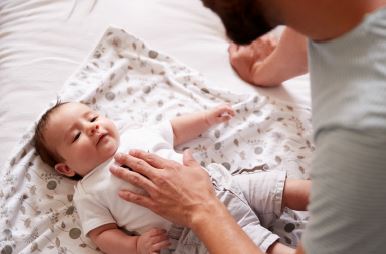Search

The Infectious Disease Implementation Research Team is a multi-disciplinary group researching the best way to implement infectious disease prevention and treatment strategies to improve the wellbeing of children and teenagers.

News & Events
Telethon donations fund early flu protection for bubsBabies worldwide could have access to life-saving influenza vaccinations from just eight weeks of age thanks to researchers at The Kids Research Institute Australia and the generous support of the Telethon community.

News & Events
Childhood influenza vaccination rates improves with better accessMore children across Australia are being vaccinated against the flu since funding was expanded and access widened under the National Immunisation Program
News & Events
Time running out to prepare for flu seasonPeople are being urged to ensure they've had their vaccination with the 'flu season expected to hit in Western Australia within weeks.
Research
Boosting the influenza vaccine schedule in children with cancer: a prospective open-label studyCurrent immunization guidelines recommend one dose of influenza vaccine for children aged ≥9 years and two doses for younger or vaccine-naïve children. However, children receiving chemotherapy have an attenuated immune response. We performed a prospective open-label study in children undergoing treatment for cancer at Perth Children's Hospital, Western Australia, to examine the safety and efficacy of a boosted influenza schedule.
Research
Acute diesel exhaust particle exposure increases viral titre and inflammation associated with existing influenzaExposure to diesel exhaust particles (DEP) is thought to exacerbate many pre-existing respiratory diseases.
Research
Impacts on influenza A(H1N1)pdm09 infection from cross-protection of seasonal trivalent influenza vaccines and A(H1N1)pdm09 vaccines: Systematic review and meta-analysesWe did a systematic literature search to identify observational and/or interventional studies reporting cross-protection of TIV and A(H1N1)pdm09...
Research
Pandemic influenza H1N1 2009 infection in Victoria, AustraliaConflicting findings regarding the level of protection offered by seasonal influenza vaccination against pandemic influenza H1N1 have been reported.
Research
Immunogenicity and safety of a combined Haemophilus influenzae type b-NeisseriaNeisseria meningitidis serogroups B, C, and Y cause most meningococcal disease in industrialized countries...
Research
Safety and Immunogencity of a Prototype Adjuvanted Inactivated Split-Virus Influenza A (H5N1) Vaccine in Infants and ChildrenHighly pathogenic avian influenza A virus (H5N1) is a leading candidate for the next influenza pandemic, and infants and children may play an important role...
